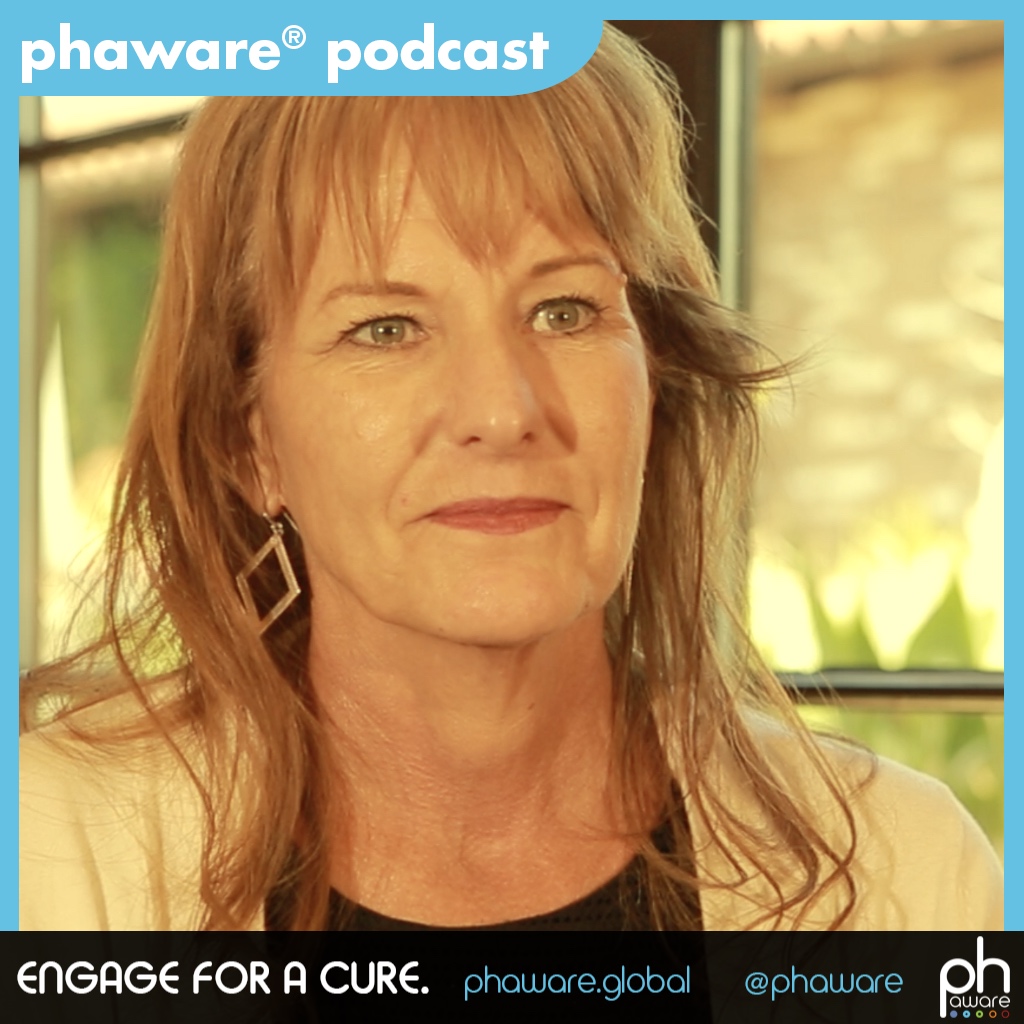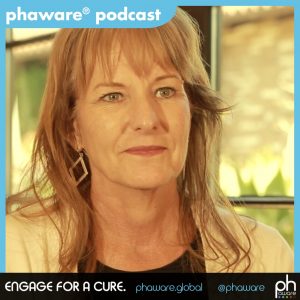Phaware Podcast: Tamara Norton, CCN

This podcast series, created and produced by phaware, is being offered as a regular guest feature on Pulmonary Hypertension News to bring the voices and life experiences of PH patients, family members, caregivers, healthcare specialists, and others to our readers. You may listen to the podcast directly, or read it via the transcript that runs below.
I’m Aware That I’m Rare: Tamara Norton, CCN
The phaware® interview (Episode 113)
Tamara Norton, CCN, from UC San Diego Medical Center, discusses a CTEPH patient’s journey from evaluation through PTE surgery.
My name’s Tamara Norton. I’m a registered nurse, and I work at the UCSD cardiovascular intensive care unit. I take care of post-op open heart patients, the CTEPH patients, and medical cardiology and ventricular assist device patients.
We take care of patients from all over the world. We have done the most PTE surgeries in the world. Dr. Jamieson started our program many years ago. Generally, they come and they’re evaluated at our center, and our surgeons look at them as well as  our pulmonary doctors to see if they’re candidates for the PTE surgery. If they are, then they come in and they have a work up done. They might go to the catheterization lab and have some procedures done there. They usually put in an IVC filter in these patients. They might go home and then come back. They’re usually here for about a week prior to being admitted. They’re admitted up on to the floor, actually, the night before the surgery, and then the next morning they go to surgery early in the morning, between 6 and 7 o’clock.
our pulmonary doctors to see if they’re candidates for the PTE surgery. If they are, then they come in and they have a work up done. They might go to the catheterization lab and have some procedures done there. They usually put in an IVC filter in these patients. They might go home and then come back. They’re usually here for about a week prior to being admitted. They’re admitted up on to the floor, actually, the night before the surgery, and then the next morning they go to surgery early in the morning, between 6 and 7 o’clock.
The surgery lasts anywhere from six to maybe, I don’t know, 10 or 12 hours, and they come out to us afterwards in the intensive care unit, post-operatively, and then we recover them. They usually stay in the intensive care unit for at least three days, and hospitalization, usually, a good-case scenario will be about 10 days, sometimes longer if they have complications.
There’s a lot of new medications that have come about that they’re treating the patients with prior to going to surgery, but some of the things that are advancements, they are able to actually get a lot more distal clot out of these patients, which is a great improvement. It used to be years ago that the distal clot wasn’t … they weren’t able to get to it, because it’s so far into the vasculature of the pulmonary bed, but now they actually have gotten new tools that they do the surgery with, and they’re able to get to that distal clot. They’re having good results with that, and we are able to do surgery on a lot of people and help them quite a bit.
Well, for myself, since I work in the intensive care unit, the patients are still fairly groggy when I see them. But our hopes are that once they’ve recovered from the surgery and everything, which actually takes some time … about six to eight weeks … we believe that they’re not as short of breath as they were previously. So a lot of times, the patient comes in and they’re on oxygen pre-operatively. Maybe they can’t walk very far. They can’t walk up a flight of stairs, they can’t walk a block, so once they’re done with the surgery, a lot of these patients are able to have more of a normal life where they can be more active, and take a walk around the block, or walk up the stairs, and just generally have a better life for themselves.
I actually have never been in to the surgery, but what the surgeons do is they make an incision on the chest and on the sternum. Then they open up the chest, and they actually go into the pulmonary artery, and they begin to remove clot from that area. They try and go into the pulmonary vasculature, and if you thought of a tree and all of the branches coming out of the tree, that’s what the pulmonary vascular looks like. And so, they’re able to take these tools that they have and actually go in to those distal areas and pull the clot out.
During the procedure, they cool the patient down, I believe, to 17 degrees. They stop the blood into that area, so it’s a bloodless field for the surgeons, which makes it easier for them to do their work. They might have to do that a couple of times. They do the right and the left separately, and then they rewarm those patients. Then they close their chest, of course, and then they come to us.
So it’s very extensive surgery. Our surgeons do a fantastic job. They do awesome, just really great.
I’m very passionate about being a nurse. I love what I do. I love that the patients come in to us, and their quality of life probably isn’t the best, and once they recover and leave us, and go out to the floor and live their life more like a normal person, I think is just a wonderful thing. It’s a wonderful thing to be a part of.
EVERYBODY HAS A STORY. WHAT’S YOURS?
Phaware global association wants to share your pulmonary hypertension story with their engaged global audience. Whether you are a patient, caregiver, or medical professional, they are enlisting PH community members from around the world.
Visit www.phawarepodcast.libsyn.com/contact to share your story and to be considered for a future episode. Never miss an episode with the phaware podcast app. Learn more about pulmonary hypertension at www.phaware.global. #phaware
***
Note: Pulmonary Hypertension News is strictly a news and information website about the disease. It does not provide medical advice, diagnosis, or treatment. This content is not intended to be a substitute for professional medical advice, diagnosis, or treatment. Always seek the advice of your physician or other qualified health provider with any questions you may have regarding a medical condition. Never disregard professional medical advice or delay in seeking it because of something you have read on this website. The opinions expressed in this column are not those of Pulmonary Hypertension News or its parent company, Bionews Services, and are intended to spark discussion about issues pertaining to pulmonary hypertension.










khris burge
i was pte surgery 3575 at uc sandiego,october 20, 2016 was surgery date. dr pretorious did my surgery and im eternally greatful for him